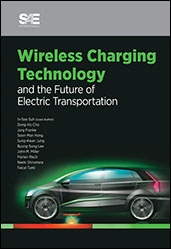Journal Article
Robust Feedback Tracking Controller Design for Self-Energizing Clutch Actuator of Automated Manual Transmission
2013-10-14
2013-01-2587
This study mainly focuses on developing an accurate tracking controller for the self-energizing clutch actuator (SECA) system consisting of a DC motor with an encoder applied on the automated manual transmission (AMT). In the position-based actuation of the SECA, abruptly increasing torque near the clutch kissing point during the clutch engagement process induces control input saturation and jerky response when a conventional feedback controller is applied. The proposed work resolves such issue and significantly increases the control accuracy of the actuator through the development of an effective H-infinity controller. The control performance is shown to be more effective than a simple PID controller via simulation and experiments using an AMT test bench equipped with SECA aided by d-SPACE and Matlab/Simulink.

